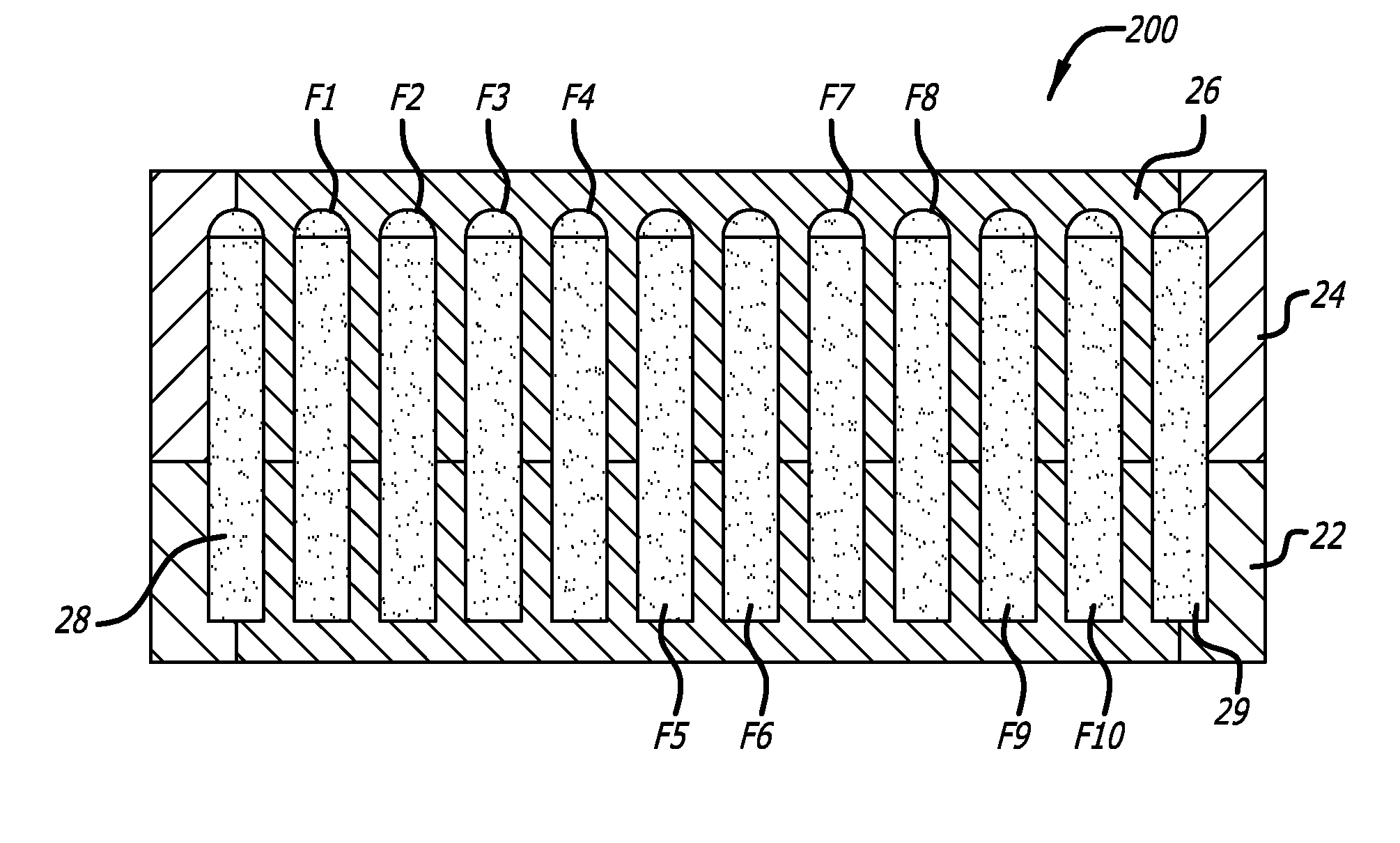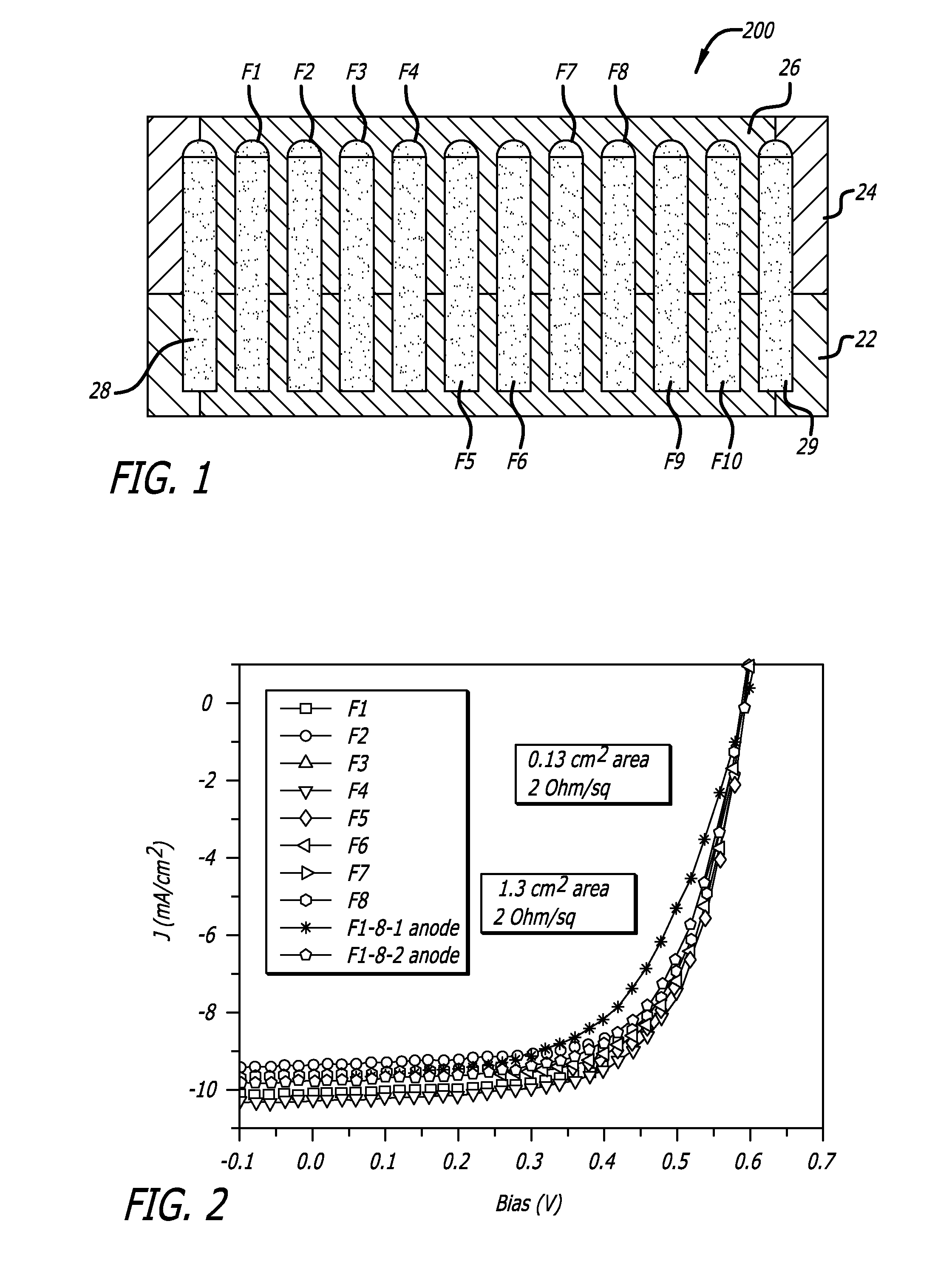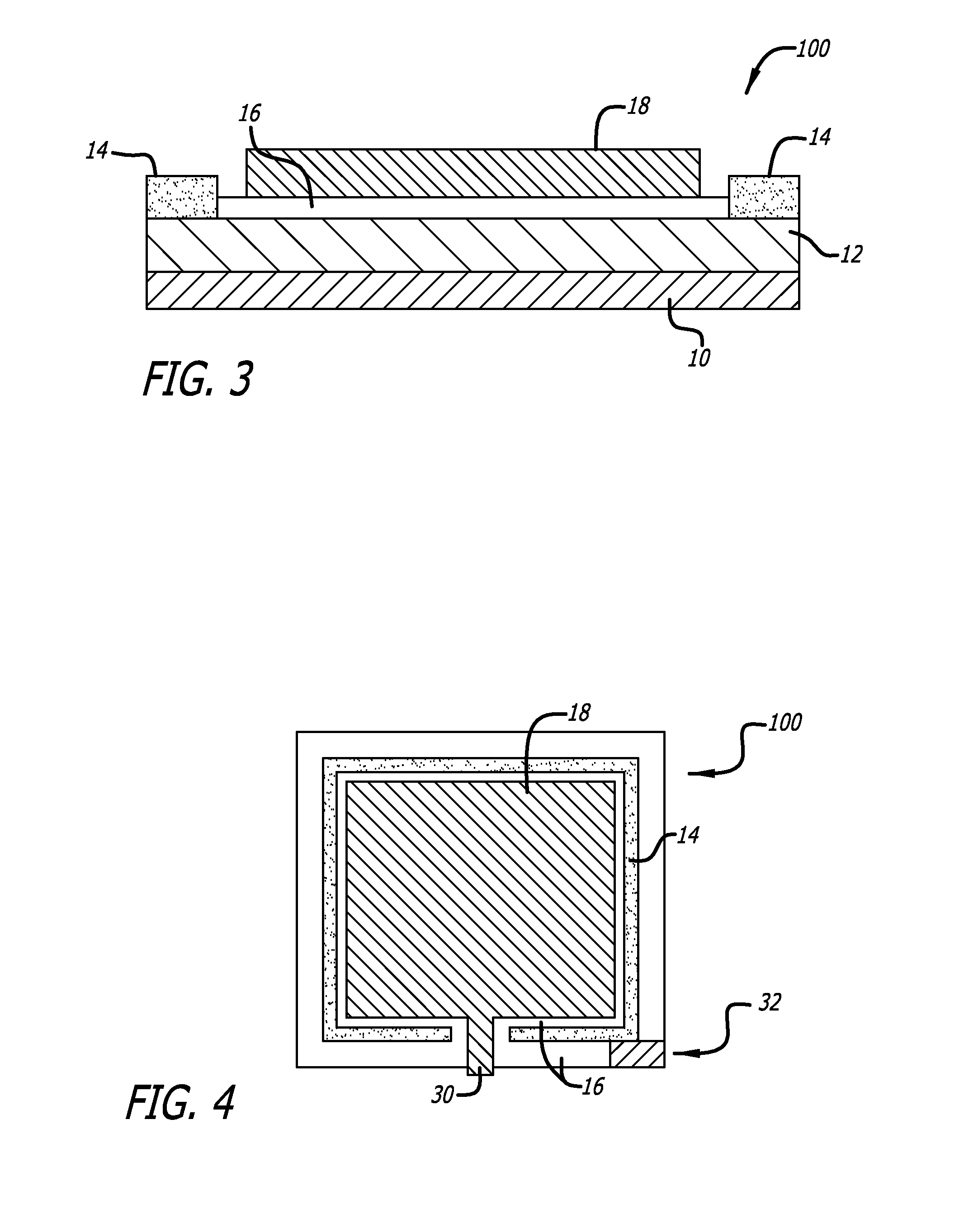Large area solar cell
a solar cell and large-area technology, applied in the field of solar cells, can solve the problem of relative poor conductivity of materials used
- Summary
- Abstract
- Description
- Claims
- Application Information
AI Technical Summary
Benefits of technology
Problems solved by technology
Method used
Image
Examples
Embodiment Construction
[0018]Referring to FIG. 1, there is a solar cell 200 in accordance with one embodiment of the present disclosure. The solar cell 200 has an active layer 26, which absorbs sunlight and converts it into electricity. The active layer 26 is located between electrodes F1-F10 and 22 that are stacked on a mechanically stable substrate and there are anode fingers 28 and 29 in direct electrical contact with the electrode 22.
[0019]Referring to FIG. 2, there are current-voltage curves for the solar cell 200 shown in FIG. 1. The first eight curves are for isolated electrodes F1 through F8 while only utilizing anode 28 as the positive contact. The photocurrent (9.3±0.3 mA / cm2) and Voc were kept substantially the same. As the distance from the anode 28 increases, the fill-factor of the solar cell 200 reduces from 66.4% in the first electrode F1 to 65.4% in the eighth electrode F8. The J-V curves indicate a varied series resistance between the different electrodes F1 through F8 in the range of 10 ...
PUM
| Property | Measurement | Unit |
|---|---|---|
| Electrical conductivity | aaaaa | aaaaa |
| Electrical resistance | aaaaa | aaaaa |
| Ratio | aaaaa | aaaaa |
Abstract
Description
Claims
Application Information
 Login to View More
Login to View More - R&D
- Intellectual Property
- Life Sciences
- Materials
- Tech Scout
- Unparalleled Data Quality
- Higher Quality Content
- 60% Fewer Hallucinations
Browse by: Latest US Patents, China's latest patents, Technical Efficacy Thesaurus, Application Domain, Technology Topic, Popular Technical Reports.
© 2025 PatSnap. All rights reserved.Legal|Privacy policy|Modern Slavery Act Transparency Statement|Sitemap|About US| Contact US: help@patsnap.com



